SharePoint and Microsoft Teams: Match made in heaven
The relationship between Teams and SharePoint
Office 365 is designed to give the modern enterprise a holistic collaboration experience across various business applications such as SharePoint and OneDrive, Word, PowerPoint, Excel, Planner, Power BI, Dynamics 365 and more. To unify the workspaces of these applications and bring employees together in one location, along with real-time messaging and video chat, Microsoft introduced Teams as the centralized “collaboration hub” within Office 365.
As Teams gains more prominence across workplaces, Office subscribers have asked where SharePoint – the traditional collaboration hub of Office 365 – fits in to Microsoft’s new vision for enterprise communications and collaboration.
Critical to the relationship between Teams and SharePoint is that it is a matter of and, not or. In fact, inherent in the design and creation of a Microsoft Teams site is its integration with SharePoint and groups in Office 365.
Every Teams site has a SharePoint site and OneDrive folder associated with it in which documents from the Teams site are stored. Files shared within Teams are automatically added to the group’s document library, with permissions and security options set through SharePoint automatically adhered to. To get started, you can create a site through Teams from a pre-existing SharePoint team site, which will automatically migrate and integrate your SharePoint content. Conversely, creating a site through Teams from scratch will automatically create accompanying SharePoint pages without you having to do anything on SharePoint.
As seen in the image below, every team channel and subsite has a corresponding SharePoint page/site URL.

SharePoint, OneDrive and Office 365 groups thus serve as the infrastructure and foundation for how your Microsoft Teams content is managed and stored on the backend.
How Teams can work with SharePoint to improve the employee experience
SharePoint is a powerful, effective tool for groups to store and share content and information amongst members. However, in today’s digital workplace – where technology is being used for an increasing amount of productivity needs and the “always-on” notion holds true for employees at all levels – organizations are looking for a unified platform that connects various productivity tools and real-time communication capabilities into one centralized location. That’s where Teams comes into play.
SharePoint files, pages and webparts on Teams
Within a SharePoint team site, links to group conversations and calendars, notebooks, and more generally take you to other applications (Outlook, OneNote, Planner, etc.). This can cause delays, confusion, and headaches as employees constantly have to switch platforms depending on their current tasks. Teams brings these applications under one roof and therefore reduces the need to constantly switch between SharePoint and other applications when working with files and other productivity and communications tools.
Users don’t have to leave Teams to access and work with their SharePoint files as they automatically appear in the “Files” tab on a Teams page:
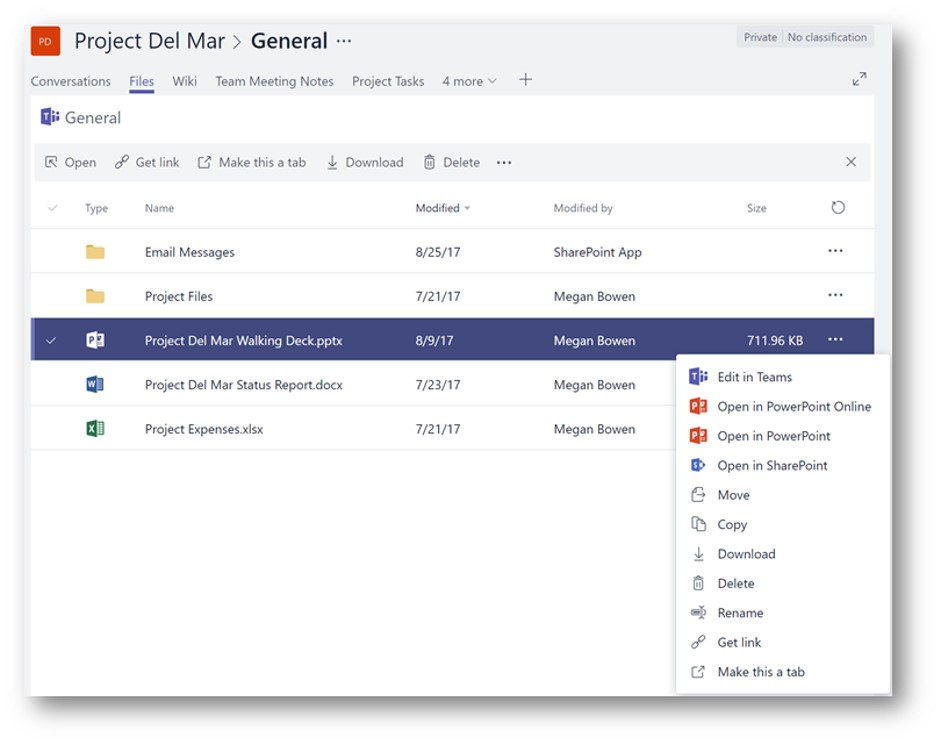
You can even add a file from SharePoint (such as a PowerPoint presentation or Excel spreadsheet) as an entire page on your Teams site:
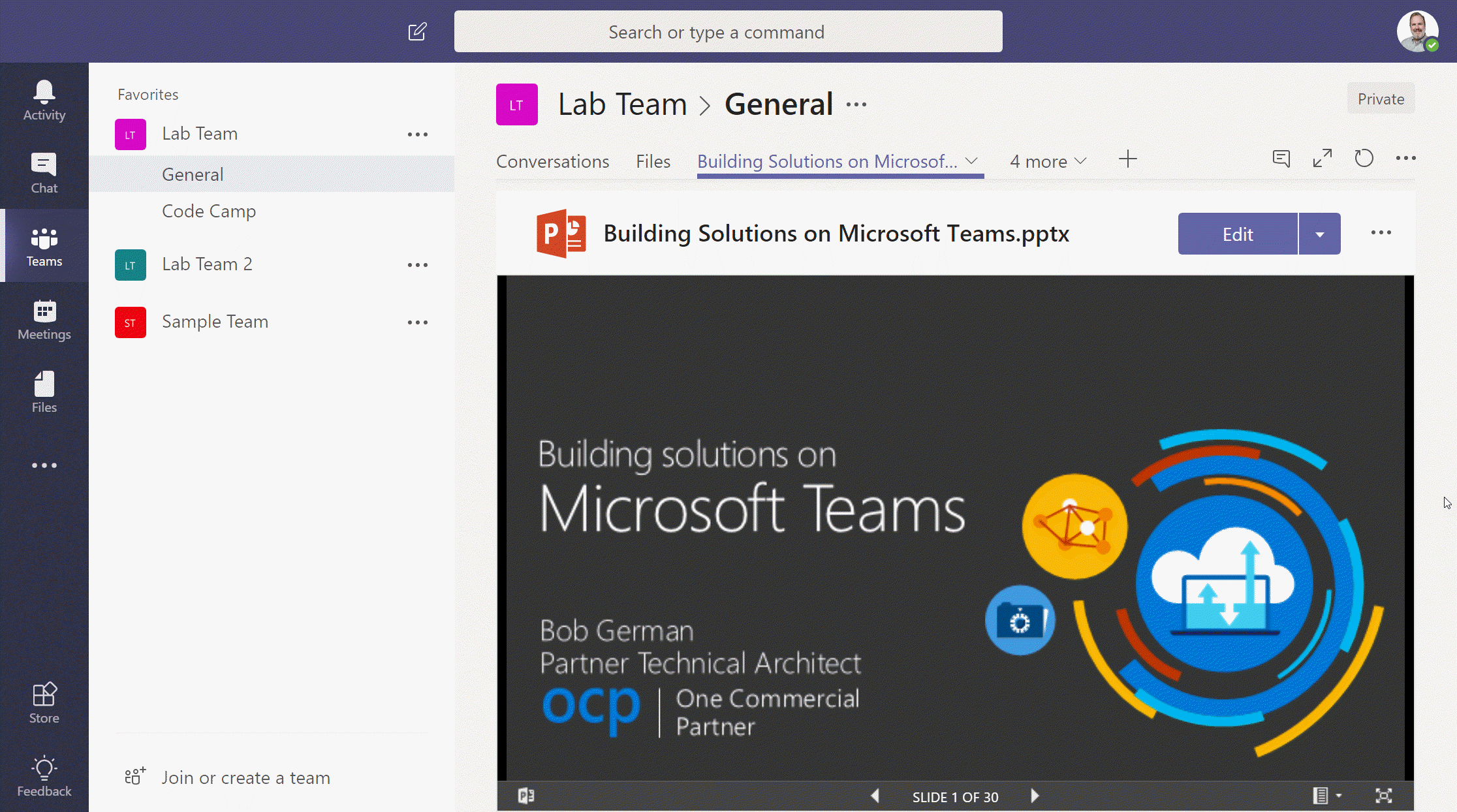
If your organization uses SharePoint as a news feed to inform employees on latest company updates and announcements, you can add an entire SharePoint page as a page in Teams to transfer your news feed and familiar interface over to Teams:
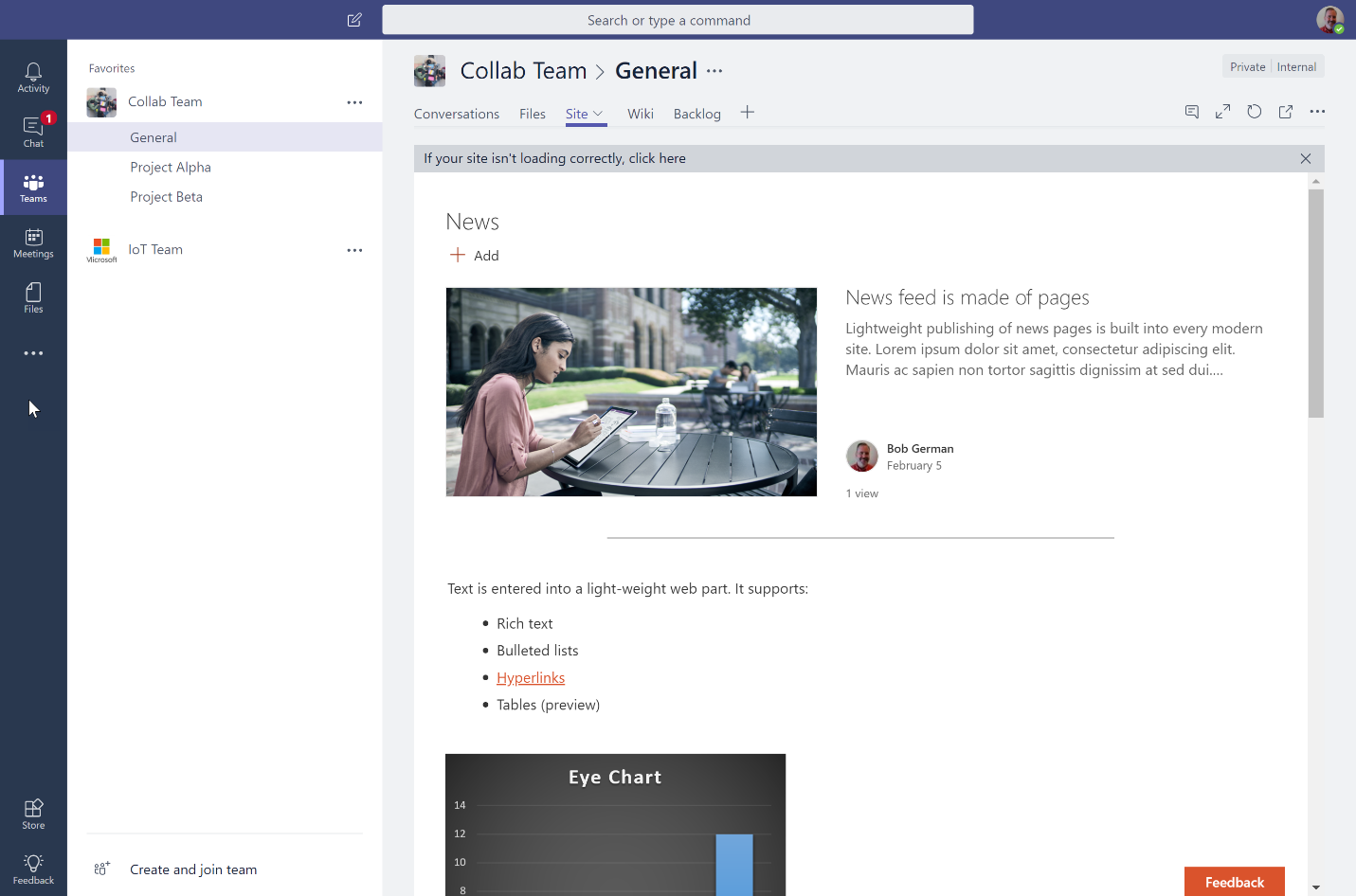
Real-time communication on Teams
Communicating with co-workers and sharing documents through SharePoint sites/Office 365 groups essentially implies nothing more than email conversations. For example, selecting “share” on a file within SharePoint will send the relevant URL for that file to your intended target through an Outlook email. The recipient is then taken away from Outlook – the communication channel used between you and your group – in order for them to view and edit the document.
For more formal messaging purposes or for sharing fully completed documents, this isn’t too big of an issue. However, employees collaborating and working together on documents are looking for fast, more personable real-time feedback from their group members. Long, confusing email chains limit the ability for a group to be able to do this quickly and effectively.
Utilizing real-time chat functionality familiar with products such as Skype-for-Business, Teams steps in to enable group members to have a conversation about a document directly, in the same place where they are viewing and editing the document. As seen in the screenshot below, an employee can start a conversation about a document that they want real-time feedback on:
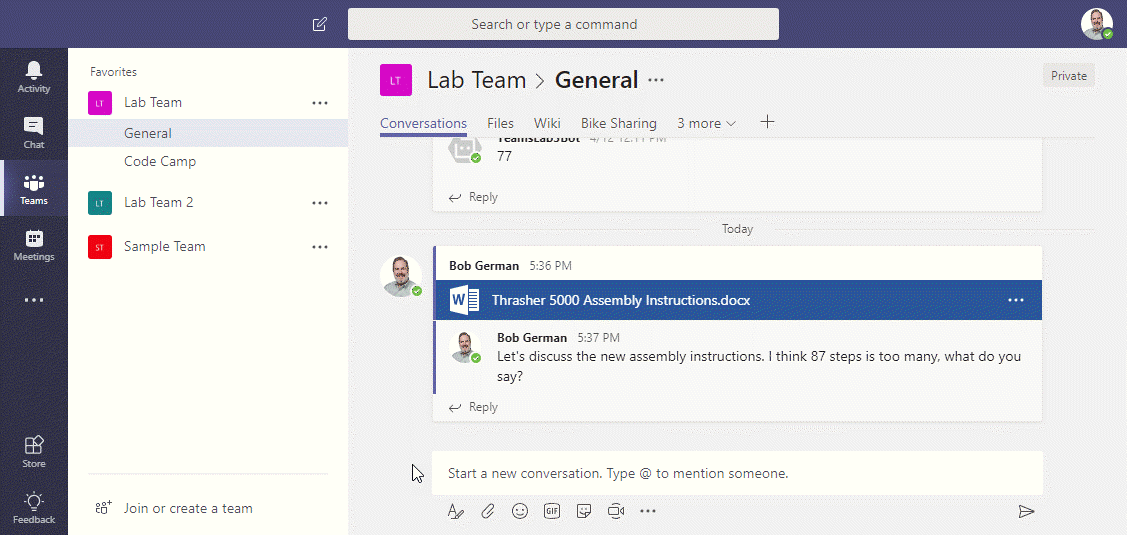
Teammates can then view and edit the document within Teams, with the conversation thread handily accessible and ready for them to reply with any comments and make any suggestions, as seen here:
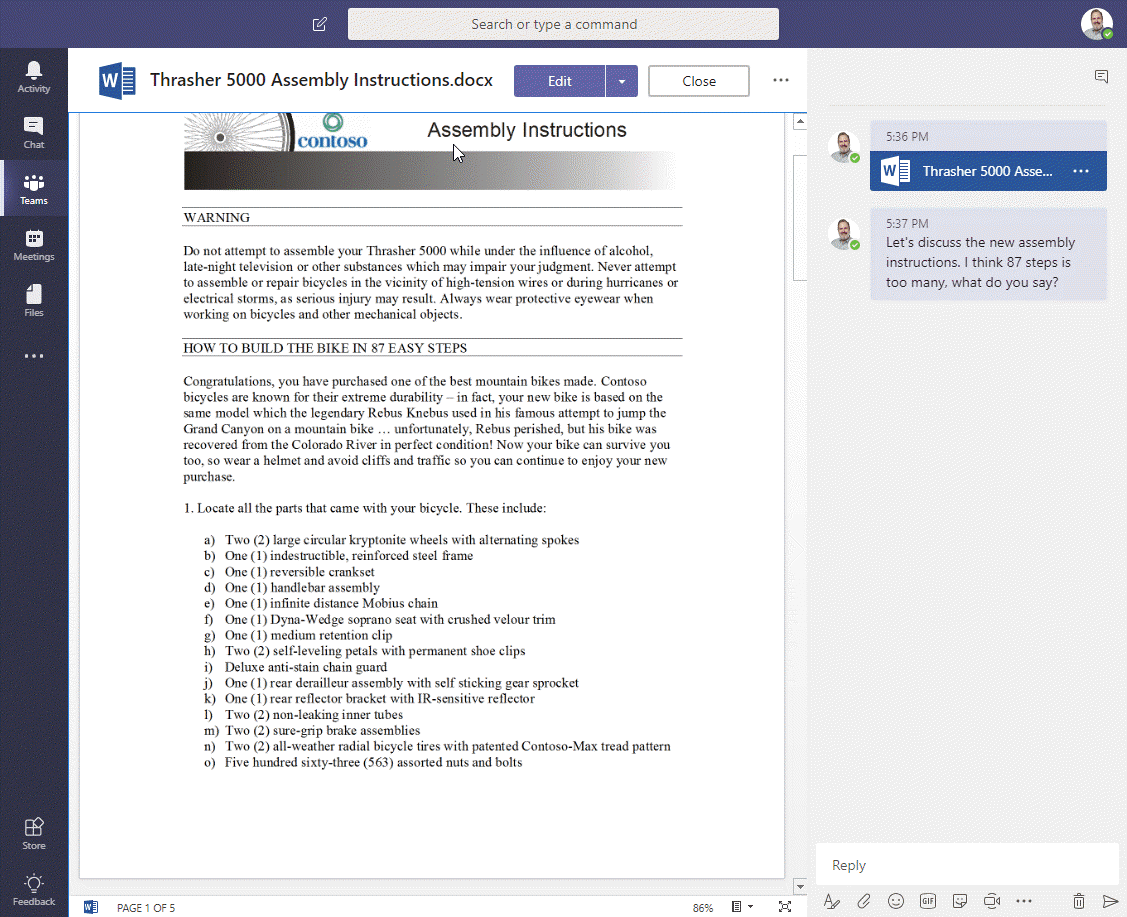
Are you ready to increase and improve teamwork at your organization?
For SharePoint users, Microsoft Teams can simplify employees’ use of digital productivity tools and facilitate more effective collaboration by bringing various applications onto one platform and by adding real-time, personable chat to content management practices. Teams thus breaks collaboration silos to provide employees with a consistent group collaboration experience on one platform, with all the functionalities needed to succeed in the digital, mobile era.


